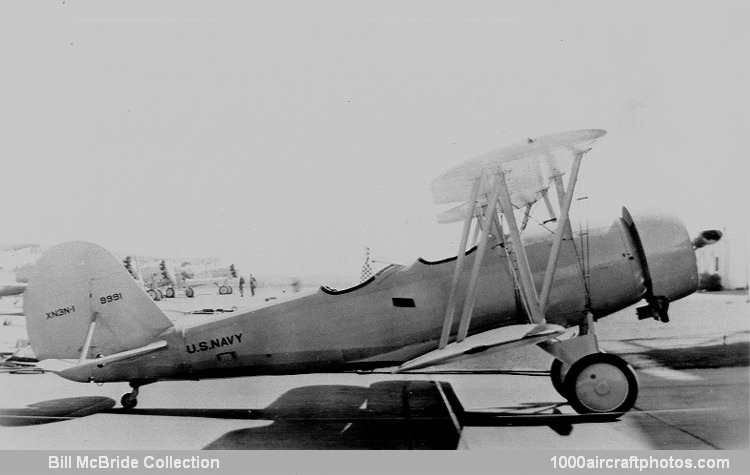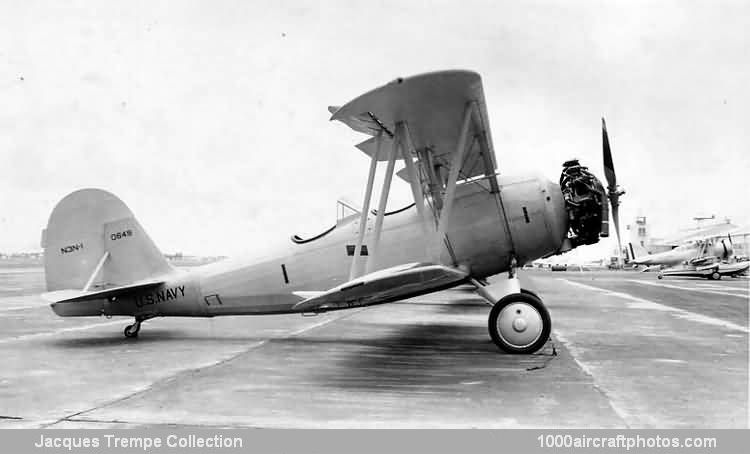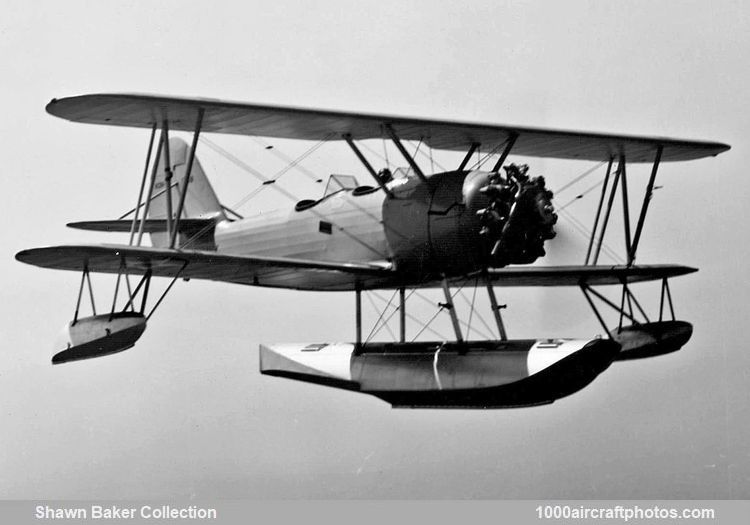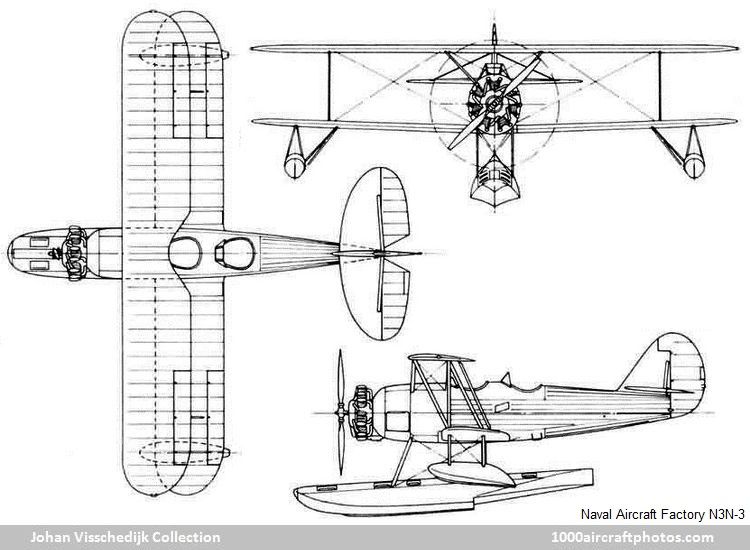01/31/2013. Remarks by
Johan Visschedijk: "In 1934 the USN developed a new primary trainer design. Outwardly, this was quite similar to the Consolidated
NY-2s and NY-3s still in service and the Stearman NS-1 that was then under test in its civil prototype form.
However, the major difference in the N3N was its structure, which featured bolted steel-tube fuselage construction with removable side panels for ease of inspection and maintenance. The wings were of all-metal construction and, like the fuselage and tail, were fabric covered. The prototype XN3N-1 (BuNo. 9991), powered with a 220 hp Wright J-5 radial engine, was flown in August 1935, at the Naval Aircraft Factory, Philadelphia, Pennsylvania, USA. While this engine had been out of production since 1929, the Navy had quantities in storage and wanted to use them up. They were also used to power the contemporary Stearman NS-1s.
N3N-1 (0649) (
Jacques Trempe Collection) APS No. 747
Following the successful test of the XN3N-1 at
NAS Philadelphia, Pennsylvania, and NAS Anacostia, Washington, District of Columbia, as both a landplane and a single-float seaplane, the Navy ordered it into production, the first of 179 N3N-1s (BuNos. 0017 to 0019, 0021 to 0101, 0644 to 0723, 0952 to 0966) being delivered in June 1936.
A single prototype XN3N-2 (BuNo. 0265) was ordered separately, and the fourth N3N-1 (BuNo. 0020) was modified as another prototype, XN3N-3. These two machines were fitted with Navy-built versions of the 240 hp Wright J-6-7 (R-760-96) engine, which was the same as that used in the NY-3s since 1929. Because of the suitability of this power plant and the obso1escence of the J-5, the last 20 N3N-1s were fitted with the Navy-built R-760 engine, and the other N3N-1s were eventually refitted with R-760-2s of 235 hp.
N3N-3 (1759) (
Shawn Baker Collection) APS No. 2041
When the N3N-1 order was completed in 1938, it was followed by 816 N3N-3s (BuNos. 1759 to 1808, 1908 to 2007, 2573 to 3072, 4352 to 4517), which differed outwardly from the N3N-1s in having revised vertical tail shape and a single-strut landing gear. The N3N-1s had been delivered with a wide anti-drag ring around the engine, but the N3N-3s did not have this feature, which was also deleted from N3N-1s in 1941-1942. Four N3N-3s were transferred to the USCG in 1941 and acquired USCG serials V193 to V196.
The N3Ns served in primary training schools throughout WW II. The majority were declared surplus at the war's end, and most of these were fitted with more powerful engines by new owners and used as crop
dusting and
spraying aircraft, work for which their biplane configuration and rugged structure suited them.
A few, however, were retained by the USN. In their seaplane configuration they were assigned to the United States Naval Academy where they fitted into the midshipmen's curriculum. The use of open cockpit biplanes, and seaplanes at that, since the fleet no longer used float seaplanes, was not quite the anachronism one might imagine. The Navy still taught its midshipmen to handle sail in the dawn of the nuclear-powered ship, so the use of obsolete propeller-driven biplanes in the jet age was understandable. When the N3N-3s were retired in 1961, they were the last biplanes in US military service, the USAF having disposed of all its Stearman biplane trainers by 1948."



